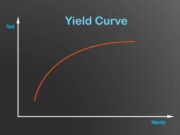
Premium, in the simplest of terms, is the total cost of any option. It is basically the sum of your option’s time and intrinsic value. When it comes to insurance, it is the amount that is required by an insurer in order to give coverage under an insurance plan for a given time period.
One common example of insurance premium is auto insurance. An individual pays a premium every month in order to get protection against theft and any damage.
Understanding Premium
Insurance premium refers to the amount that a company charges for active coverage. The premium that the person pays is determined by factors like health, age, socio-economic background, and the kind of area that a person lives in. People pay the premium in small payments over the year and the amount of premium may change with time.
If an individual fails to pay the premium, the policy is void and the companies cannot make any claims against it.
Types of premium
There are many types of premiums, but some of the most common are:
Insurance premiums
Insurance premiums are the price paid for insurance coverage. In order to determine your premium, insurers consider a variety of factors, including your age, gender, health, and driving record. Some insurers also use credit-based insurance scores to help determine premiums. Insurance scores are based on your credit history and are intended to predict the likelihood that you will file an insurance claim in the future. Although insurance companies are not required to use credit-based insurance scores, some states have laws that restrict how insurers can use them. As a result, it’s important to shop around when looking for insurance coverage to make sure you’re getting the best deal.
Mortgage premium
A mortgage premium is an insurance policy that protects the lender in the event that the borrower defaults on the loan. The premium is paid by the borrower as part of the monthly mortgage payment and is usually a percentage of the total loan amount. Mortgage insurance is required on all loans with a loan-to-value ratio of more than 80%. Loan-to-value ratio is the amount of the loan compared to the value of the property. For example, if you have a $100,000 mortgage on a property worth $120,000, your loan-to-value ratio would be 83%. If you default on the loan, the mortgage insurer will pay the lender the outstanding balance of the loan up to the policy limit. Mortgage insurance premiums are typically paid for by the borrower as part of the monthly mortgage payment. The premium is a percentage of the loan amount and can vary depending on the type of loan, term of the loan, and other factors.
Investment premium
When it comes to investing, there are a variety of different premiums that can be taken into consideration. For example, the size premium is the tendency for small cap stocks to outperform large cap stocks over the long term. Then there’s the value premium, which is the tendency for value stocks to outperform growth stocks over time. And lastly, there’s the momentum premium, which is the tendency for stocks that have been performing well to continue to do so in the short term. While there’s no guarantee that any of these premiums will hold true in every instance, they’re definitely worth taking into account when making investment decisions.
Loan premium
A loan premium is a fee charged by lenders to borrowers for the use of borrowed money. The size of the premium is based on the amount of the loan, the creditworthiness of the borrower, and the term of the loan. Loan premiums are generally paid upfront, in full, and are not typically refundable. For example, if a borrower takes out a $100,000 loan with a 5% premium, the borrower would pay $5,000 at closing. The purpose of a loan premium is to compensate the lender for taking on the risk of lending money to the borrower. By charging a premium, lenders are able to offset some of the losses they may incur if the borrower defaults on the loan. As a result, loan premiums help to make lending more profitable and risk-averse for banks and other financial institutions.
Tax premium
In the business world, there are many different types of taxes that companies must pay in order to remain compliant with the law. One type of tax is a premium tax, which is a tax that is assessed on insurance premiums. Premium taxes are typically imposed by state governments, and they can vary based on the type of insurance coverage that is being purchased. In most cases, premium taxes are imposed as a percentage of the total premium cost. For example, if a company purchases $100,000 worth of insurance coverage and the premium tax rate is 5%, the company would owe $5,000 in premium taxes. Premium taxes can be a significant expense for businesses, and they are typically factored into the overall cost of insurance coverage. As a result, businesses should be aware of the potential for premium taxes when budgeting for their insurance needs.


































